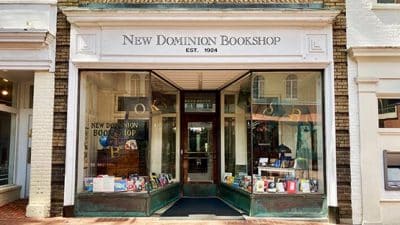
Last year’s Black Friday sales drew 66.5 million Americans to shop in person and 88 million to shop online.
WalletHub released its 2022’s Best Places to Shop on Black Friday.
The personal finance website surveyed nearly 4,000 deals from 16 of the United States’ biggest retailers in 2022 Black Friday ad scans to identify the stores with the biggest discounts in appliances, jewelry, toys and other categories.
The best Black Friday retailers according to average percent discount are JCPenney with 64.71 percent, Belk with 64.23 percent, Macy’s with 53.05 percent, Office Depot and OfficeMax with 49.93 percent and Kohl’s with 44.23 percent.
The report also revealed that JCPenney has the highest overall discount rate, while Costco has the lowest at 16.80 percent. The overall average discount for Black Friday is 37 percent.
The Apparel & Accessories category has one of the biggest shares of discounted items at 21.09 percent off all offers, however the smallest is 3.73 in the Furniture category.
Experts offered opinions on how consumers can distinguish between real Black Friday deals and marketing traps.
“The best way to identify a ‘deal’ on Black Friday vs clever marketing is to shop right now,” Dr. Robert Paul Jones, Department Chair and Associate Professor at Texas Tech University, and Regional Editor (Americas) of the International Journal of Retail and Distribution Management, said in a press release. “Explore pricing that is available in-store and online for the items you will be looking for. Often you will find deals nearly as good today as you will on Black Friday. Also, do not be fooled by look-alike products from vendors you do not recognize. That is a common trap to lure you into a store just to find out it is not what you were looking for. Also, watch to see if the item is the same on Black Friday or just similar. Make a note of the vendor’s stock number of the item. This is particularly important for big-ticket items such as TVs and appliances. Often a sale item looks the same but may be missing the features you are looking for. This is a common way for retailers to get to a lower price without cutting into their margins.”
According to Jared Watson, an Assistant Professor at New York University, consumers should consider if a product is usually sold by the retailer or if it is produced and sold at the retailer for Black Friday. In other words, can you purchase this product before or after Black Friday?
“They can also consider if this is available at other reputable retailers and whether there is a history of product reviews (on this retailer or another). Lastly, the Black Friday season has recently drastically expanded from one day to multiple weeks, so consumers might also consider if the retailer is offering a ‘Black Friday’ guarantee wherein their purchase price will be the lowest in this time frame,” Watson said.
How can consumers protect themselves from overspending on Black Friday?
“Overspending is a big problem and I think consumers should be aware of that not only during the holiday season but throughout the year,” Dr. Omid Kamran Disfani, an Assistant Professor at Southern Illinois University, said in the press release. “My basic rule is: to have a list of items you absolutely need and the items that you do not need but want to buy before shopping. Also, think ahead about the approximate amount you can spend for each item and your overall shopping trip (offline or online). When you begin shopping, start with items you absolutely need and monitor the amount of money you may still have to spend on things you want but do not necessarily need. If you do not need something, you do not have to buy it! Simply because an item is on sale does not mean that you have to buy it. I think consumers have a Fear of Missing Out when they see deals and end up buying items they do not need just because those items are on sale. I know sometimes it is hard to resist a good deal, but when you get an item you do not need for 50% off, you are not saving 50%; you are losing the 50% you pay for it. So, prepare a list before a shopping trip and think about the range you can spend. Try to follow your list and your price range as much as possible.”
Dr. Aimee Dinnín Huff is an Associate Professor at Oregon State University, and she said consumers can observe Buy Nothing Day instead of Black Friday, which “highlights the negative social and environmental consequences of consumerism. Others choose to support brands with ethical business practices or to carefully choose products that will provide durable, long-term benefits. Other shoppers, who feel financial pressure to take advantage of Black Friday discounts, can avoid overspending by setting a budget and planning purchases ahead of time. Retailers can prompt impulse purchases online and in-store, and indulging in these unplanned purchases can quickly send a consumer over budget,” Huff said.
Tyra Burton, senior lecturer at Kennesaw State University, said that consumers need a game plan to maximize bargains on Black Friday.
“Know what your budget is and what items you are looking to purchase. Pre-shop the sales flyers and look online. Have a good idea what the ‘regular’ price is for your big-ticket items, so you will know if it is a true ‘doorbuster’ deal. If you are shopping in a brick-and-mortar store and need to get the ‘hot toy’ for the year, shop with a partner and split up to pick up different items that are scarce. And lastly, remember not to let FOMO push you to exceed your limits and abandon your plan,” Burton said.
Disfani suggests buying products you planned to buy and taking advantage of deals.
“Do not buy products you do not need just because it is on sale! Have a list before shopping, it really helps you focus,” Disfani said.










